We explore how MFA Fatigue attacks work, how they impact businesses, and what measures you can take to protect your organization.
The ‘all-inclusive’ of cybercrime: Scam-as-a-Service facilitates digital fraud

Scam-as-a-Service (SaaS) represents an illicit business model in which cybercriminals offer a platform or set of tools to other criminals, enabling them to carry out fraud more efficiently and profitably. It’s akin to renting a toolkit for theft, but in the digital realm.
How does Scam-as-a-Service work?
S
cam-as-a-Service operates similarly to any other online service. A group of highly specialised cybercriminals develops the necessary tools for various types of fraud, such as phishing kits, fake websites, or malware. These tools are marketed through clandestine forums on the dark web, where any cybercriminal can purchase them for a fee. Once acquired, buyers can customise these tools and use them to conduct a wide range of scams, including phishing, pharming, ransomware, and e-commerce fraud. In other words, the less experienced cybercriminal only needs to find a victim, and the toolkit takes care of the rest.
Types of fraud facilitated by Scam-as-a-Service
This technique, in a way, makes it easier to access the resources necessary to execute various types of fraud. Some of the most common include:
- Phishing: Probably the most well-known scam, phishing involves sending fraudulent emails that appear to come from legitimate entities (banks, utility companies, social media platforms, etc.) with the aim of stealing personal and financial information. Phishing kits provided by Scam-as-a-Service make it very easy and quick to create highly convincing emails.
- Pharming: Similar to phishing, pharming redirects users to fake websites when they attempt to access legitimate ones. This is achieved by manipulating the system files on a computer or the DNS server.
- Ransomware: Ransomware encrypts files on a computer or server and demands payment for their restoration. Ransomware kits facilitate the creation and distribution of this type of malware.
- Tech support scams: Scammers pose as technical support agents and contact victims via phone calls or pop-up messages on their computers, claiming to have detected a problem with the system. They then convince victims to grant them remote access to their computer to install malicious software or steal information. With the right tools, criminals can automate calls and reach a large number of users.
- E-commerce scams: These involve the creation of fake online stores, complete with all details from the product listings to the payment gateway, which sell products at very low prices. Once the victim makes a purchase, they do not receive the product and lose their money.
- Investment scams: Scammers promise high returns on false investments, such as cryptocurrencies or investment funds.
- Romance scams: Scammers create fake profiles on dating sites and establish emotional relationships with their victims to later ask for money.
Strategies and consequences of the SaaS business
Cybercriminals using Scam-as-a-Service employ various strategies to enhance their success. One of these is social engineering, which involves using psychological manipulation techniques to convince victims to provide confidential information or take actions that benefit the attacker. Additionally, scammers personalise their attacks to make them appear more legitimate; for instance, they might use publicly available information to create more convincing emails or messages. Another common strategy is creating a sense of urgency, which pressures victims into making hasty decisions and prevents them from verifying the information. Finally, automation is a key tool in Scam-as-a-Service, as it allows many aspects of the attacks to be automated, thereby increasing the efficiency and reach of the campaigns.
The consequences of Scam-as-a-Service are extensive and highly damaging. By greatly facilitating access to cybercrime tools, this model significantly increases the number and sophistication of attacks. Victims of these scams can suffer substantial financial losses, whether from theft, loss of confidential information, or damage to their reputation. Moreover, the rise in online scams erodes consumer trust in digital transactions, which can negatively impact e-commerce and other online activities. On a broader scale, the losses resulting from these scams can have a detrimental effect on the overall economy.
Who is affected by Scam-as-a-Service?
The reach of Scam-as-a-Service is extensive, impacting individuals, businesses, and governments in various ways.
- Individuals: From the average citizen who may fall victim to phishing attacks to the entrepreneur who might lose their savings in an investment scam, individuals are common targets. These scams can range from simple attempts to steal passwords to more elaborate social engineering schemes.
- Businesses: Both large and small companies are attractive targets for cybercriminals. They may fall victim to ransomware attacks, which encrypt the company’s data and demand payment for its restoration, or e-commerce fraud, where customers are deceived into buying fake products or services. Companies, especially those where identity verification is crucial (such as banks, healthcare services, insurance companies, etc.), should rely on identification solutions from expert providers with a proven track record of security, like TrustCloud.
- Governments: Governments are also targets of cyberattacks driven by Scam-as-a-Service. These attacks may aim to steal confidential information, sabotage critical systems, or interfere with electoral processes.
Prevention is key to reducing the risk of SaaS
While it is impossible to completely eliminate Scam-as-a-Service, there are measures that can help reduce its risks:
- Education: Education is crucial in combating Scam-as-a-Service. Understanding the different types of scams and how to identify them is the first line of defence.
- Security software: Using up-to-date and reliable security software can help protect devices and personal data.
- Identity verification: It is essential to verify the identity of websites and individuals you interact with online. For businesses, it is vital to employ the most advanced and current solutions to safeguard identity verification and onboarding processes.
- Strengthening passwords: Using strong and unique passwords makes it more difficult for cybercriminals to access online accounts.
- Skepticism: If an offer appears too good to be true, it is likely a scam.
The challenge of accurately measuring the true extent of Scam-as-a-Service poses a colossal problem for authorities and investigators. Operating in the shadows of the dark web and using anonymous networks, these operations leave few digital footprints, making it difficult to precisely quantify their volume or track the diverted funds. Many scams go unreported, and those that are reported often lack the necessary information to directly link them to a Scam-as-a-Service platform.
This lack of visibility provides fertile ground for cybercriminal networks. The obscurity surrounding this business model allows them to operate with relative impunity. By offering a “turnkey” service for crime, these organisations not only recruit new cybercriminals but also provide them with the tools and knowledge needed to carry out their illicit activities more efficiently.
Contact our fraud experts now and protect your business
























